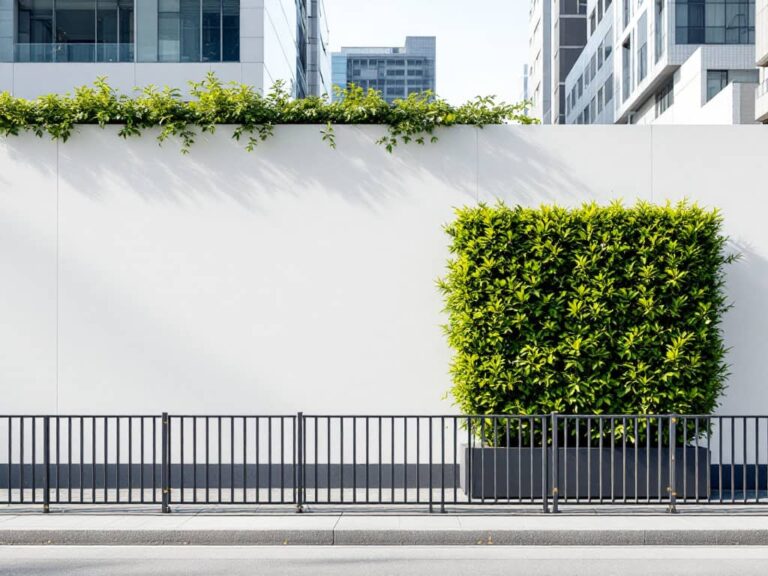Types of Graffiti Prevention,
from physical barriers to anti graffiti coatings
-
Ko van den Boom
- Reading time: 24 minutes
- Graffiti prevention

Comprehensive Strategies for municipalities
Graffiti vandalism poses a significant challenge for urban environments, impacting aesthetics, property values, and community safety. To combat this issue, various prevention strategies can be employed. This blog post will explore effective types of graffiti prevention, including access prevention, protective coatings, surveillance and monitoring, community engagement, rapid removal strategies, legal measures, and environmental design strategies.
Graffiti is a form of visual communication that has evolved over decades, encompassing a wide range of styles and intentions. It can be seen as both an art form, a method of expression and a form of vandalism that often reflects the social and political climate of the time. This blog post aims to provide a comprehensive overview of graffiti, its definitions, types, cultural significance, and the ongoing debates surrounding it.
Contents
Ko van den Boom
Main Categories
Related articles
Main Categories
Access Prevention
Access prevention is a fundamental approach to reducing graffiti incidents by limiting the physical access that vandals have to potential targets. By strategically controlling entry points and visibility, communities can create an environment that discourages vandalism. This involves not only physical barriers but also thoughtful landscaping and design choices that enhance security.
- Barriers and Fencing
Installing physical barriers like fences can significantly deter access to vulnerable areas. Research has shown (like this comparative analysis carried out in Austria, Germany, Spain and the UK ) that areas with limited access are less likely to experience graffiti vandalism. For instance, urban planners often recommend the use of fences or walls around vulnerable properties. These barriers can be designed not only for security but also for aesthetic purposes, blending with the environment while still serving their primary function.Metal barriers are particularly effective but may not always be practical in certain locations. - Landscaping
Installing physical barriers like fences can significantly deter access to vulnerable areas. Research has shown (like this comparative analysis carried out in Austria, Germany, Spain and the UK ) that areas with limited access are less likely to experience graffiti vandalism. For instance, urban planners often recommend the use of fences or walls around vulnerable properties. These barriers can be designed not only for security but also for aesthetic purposes, blending with the environment while still serving their primary function. Metal barriers are particularly effective but may not always be practical in certain locations. - Environmental Design:
Designing spaces with visibility in mind can minimize secluded and dark areas where graffiti is more likely to occur. The American non-profit Project for Public spacesfound out that, placing sculptures or art installations in well-used areas enhances natural surveillance and reduces opportunities for vandalism (see their study here).
Protective Coatings against graffiti
Protective coatings serve as a barrier between graffiti and surfaces, making it easier to clean or preventing adhesion altogether. These coatings are essential tools for property owners and municipalities looking to maintain the integrity of their buildings and public spaces against vandalism. There are several types of protective coatings available, each with its unique benefits.
- Sacrificial Coatings: These temporary layers can be removed along with graffiti but require reapplication after cleaning.
- Permanent Coatings: These coatings create a non-stick surface that prevents paint from bonding to the material underneath. They can be particularly useful for high-profile targets like signs and walls.
- Anti-Graffiti Films: Transparent films applied over surfaces protect against vandalism while remaining nearly invisible. These films are often more economical than replacing damaged surfaces
Some types of anti graffiti coatings create a secondary beneficiary effect: they can slow down the deterioration of surfaces due to pollution and exposition to the elements (the weather).
Surveillance and Monitoring as a Graffiti Prevention Method
Increasing the perceived risk of getting caught can deter potential vandals. Effective surveillance strategies not only help prevent incidents but also provide valuable evidence when vandalism occurs. The presence of monitoring systems creates an environment where potential offenders may think twice before acting. Strategies for monitoring include:
- CCTV Systems
CCTV systems have become increasingly common in urban environments as a means of deterring crime. By installing surveillance cameras in high-risk areas, property owners and municipalities can monitor activity around the clock. Modern technology allows for remote video monitoring, enabling trained operators to watch properties in real time and respond quickly if suspicious behavior is detected. - Lighting
Well-lit areas are less attractive to vandals who prefer anonymity during their acts. That is why adequate lighting can be crucial for deterring vandalism at night. Motion-sensitive lights can illuminate areas when movement is detected, increasing visibility and safety. - Community Reporting Systems Enhance surveillance efforts by empowering residents to take an active role in monitoring their neighborhoods. Encouraging community members to report new incidents quickly facilitates faster responses from authorities and sends a strong message that vandalism will not go unnoticed or tolerated.
Community Engagement: When Citizens Work Together Against Graffiti
Engaging the community fosters a sense of ownership and responsibility towards public spaces, which is vital in preventing graffiti vandalism. When residents feel connected to their environment, they are more likely to take action against vandalism and work collaboratively towards maintaining their neighborhoods. Strategies include:
- Murals and Public Art
Involving local artists in creating murals can beautify areas while reducing blank spaces that attract graffiti. Research suggests that vibrant designs make tagging more challenging for vandals. This This study carried out in Harleen (Netherlands) also showed that including community art, particularly murals in the cityscape, improves the image of depressed neighborhoods, increases social engagement, and brings economic benefits through tourism. - Adopt-a-Spot Programs
Encouraging community members to take responsibility for maintaining specific areas increases vigilance and reduces opportunities for vandalism. - Educational Initiatives
Programs aimed at educating youth about the consequences of graffiti can help reduce incidents by promoting positive alternatives. One such example is the project of the Kingston Council (UK) which encourages local residents to work together to eradicate graffiti, involving youth in community projects that promote awareness and responsibility regarding graffiti vandalism.
Fast Graffiti Removal Strategies
The Australian government is convinced that quick removal of graffiti is crucial in preventing further vandalism. This is why they developed a platform that enables citizens to report new graffiti as soon as they appear. This includes:
- Regular Inspections
Conducting frequent checks for new graffiti ensures quick removal before it becomes a permanent fixture. - Professional Removal Services
Hiring specialized services for effective cleaning can minimize the time graffiti remains visible. - Data on Removal Timeliness
Studies indicate that rapid removal within 24 hours significantly reduces the likelihood of repeat offenses at the same location. The “law of diminishing vandalism” suggests that persistence in cleaning up pays off over time.
The implementation of these strategies is much easier where municipalities have implemented a program for the application of anti-graffiti coatings on the most valuable municipal properties.
Legal Measures and Enforcement
Implementing legal frameworks serves as a deterrent against graffiti vandalism by establishing clear consequences for those who engage in such activities. A robust legal approach signals that communities take this issue seriously and are committed to maintaining public order. These strategies can involve:
- Stricter Penalties
Enforcing laws that impose harsher penalties on those caught vandalizing property sends a clear message about the consequences of such actions. - Public Signage
Displaying signs that inform potential vandals about legal repercussions can act as an additional deterrent.
Environmental Design Strategies Can Also Prevent Graffiti
The layout and design of public spaces significantly influence graffiti occurrence; thoughtful planning can create environments less conducive to vandalism while enhancing overall safety and enjoyment for residents. Environmental design strategies focused on graffiti prevention can include:
- Enhancing Visibility and Sightlines
Ensuring clear sightlines in public spaces reduces hiding spots for vandals, making it harder for them to operate unnoticed. - Creating Active Spaces
Creating vibrant, well-used areas discourages vandalism through natural surveillance by community members. Spaces designed for people signal positive activity and ownership, which are undesirable for vandals.
Like to Know More About Professional Anti-Graffiti Coatings?
Read our guide about the types and specifics of these products. You can also contact Mavro International and get information about what options municipalities have in order to protect their urban infrastructure with anti-graffiti coatings.
Conclusion
By implementing these comprehensive strategies for graffiti prevention, communities can create safer, more aesthetically pleasing environments while fostering a sense of ownership among residents. Each approach contributes to reducing opportunities for vandalism and promoting community engagement in maintaining public spaces. Most of the strategies mentioned above focus on physical blocking and reducing motivation for graffiti vandalism from being carried out in the first place. However, even if all of those strategies are implemented flawlessly, there will always be occurrences of vandalism. This is why, in places where it is imperative that graffiti is removed quickly, using protective coatings is still the safest way to ensure public infrastructure is restored before it becomes part of the cityscape.




